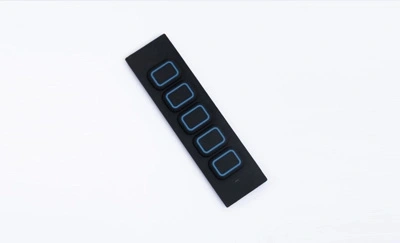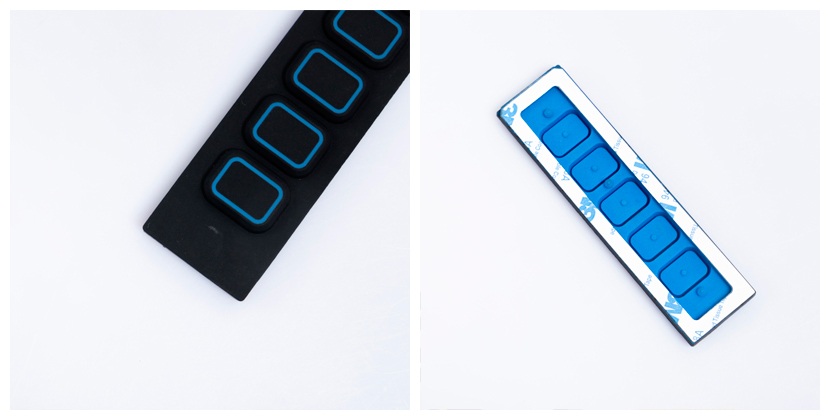
In the world of electronic components, the question of waterproofing is crucial, especially for devices like dome switch keypads that are often used in various environments. This article explores the intricate details of how dome switch keypads can be designed to be waterproof, examining the circuit structure, product architecture, and material choices that contribute to this essential feature.
Dome switch keypads operate based on a simple yet effective mechanism where a user's press on the keypad deforms a dome-shaped switch, closing an electrical circuit. Traditionally, these keypads weren't designed to be waterproof, but with advancing technology, waterproofing has become a feasible and often necessary feature.

Sealed Contacts: The key to waterproofing at the circuit level is to ensure that the contacts beneath the dome switches are completely sealed. This can be achieved using a thin, flexible printed circuit board (PCB) with a layer of insulating material that prevents water ingress.
Conductive Traces: The PCB's conductive traces, which transmit the signal when the switch is closed, must be coated or encapsulated to prevent corrosion and short-circuiting caused by moisture.
Sealed Enclosure: The external casing of the keypad must be designed to prevent water from entering the internal mechanism. This involves precision engineering to ensure a tight seal around the edges and any entry points.
Dome Shape and Placement: The dome's shape and its placement within the keypad play a role in diverting water away from sensitive areas. A slightly convex shape can help in directing water away from the central contact point.
Silicone Rubber Domes: Silicone is inherently water-resistant and can be used to create the dome switches themselves. Silicone rubber provides an excellent balance between tactile feedback and waterproof properties.
Polyurethane Overlays: For the top layer of the keypad, polyurethane is a preferred choice due to its durability and water-resistant properties. It can be molded to form a seamless cover over the entire keypad.
Adhesive Selection: The choice of adhesives is critical. They must be strong enough to maintain a seal over long periods and under varying environmental conditions.
Precision Molding: The components of the keypad must be precisely molded to ensure a snug fit, leaving no gaps for water entry.
Testing Protocols: Rigorous testing is essential. This includes submersion tests and simulated environmental exposures to ensure the keypad's waterproof integrity over its intended lifespan.
Balancing Tactility and Seal Integrity: Increasing the waterproofing often requires making the keypad stiffer, which can impact user experience.
Cost Implications: Waterproofing involves additional materials and manufacturing complexities, which can increase the overall cost of the keypad.
Creating a waterproof dome switch keypad involves a meticulous blend of circuit design, structural engineering, and material science. While challenging, it is entirely feasible to design dome switch keypads that effectively resist water ingress, ensuring functionality and durability in moisture-prone environments.
To enhance the waterproofing capabilities of dome switch keypads, selecting the right adhesive is crucial. A specific type of adhesive that is well-suited for this purpose is 3M's VHB (Very High Bond) tape series. Let's integrate this information into the article, specifically under the section "Material Selection for Waterproof Keypads."
Silicone Rubber Domes: Silicone remains a top choice for the dome switches due to its inherent water resistance and excellent tactile response.
Polyurethane Overlays: Polyurethane is used for the keypad's top layer, providing a tough, water-resistant surface.
Adhesive Selection: Here's where things get specific. For superior waterproofing, the choice of adhesive tape can make a significant difference. A highly recommended option is the 3M VHB Tape series. This family of tapes is known for its strong bonding and excellent sealing properties. Among the VHB series, the 3M VHB Tape is particularly effective for electronic applications requiring waterproof seals. It is a clear, double-sided, pressure-sensitive acrylic tape with a high degree of durability and resistance to moisture. Its ability to bond to a wide range of materials, including metals and plastics, makes it ideal for securing the layers of a dome switch keypad in a way that effectively blocks out moisture.
Incorporating a specific adhesive like the 3M VHB Tape into the design of dome switch keypads significantly enhances their waterproofing capabilities. This choice is crucial for applications that demand high levels of moisture resistance, such as outdoor keypads or devices used in wet environments.